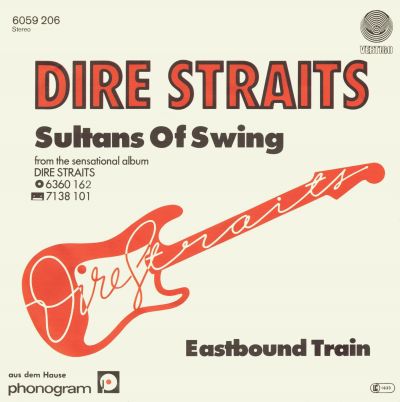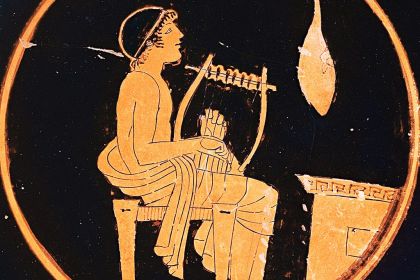SONGWRITER
Sultans of Swing: how flamenco shaped Dire Straits' debut single

Sultans of Swing single cover
Released in 1977, Sultans of Swing marked the remarkable inception of the English rock band Dire Straits propelling them into an unparalleled realm of fame on both sides of the Atlantic. Its initial airing on BBC Radio London acted as the catalyst for securing a major label contract, which paved the way for their inaugural album garnering an expansive and enthusiastic reception.
At the core of the harmony within Sultans of Swing lies the musical turnaround referred to as the Andalusian cadence, a hallmark of various flamenco styles. This distinctive musical trick finds favor in pop music frequently recurring without alteration across an entire composition. Similar techniques grace notable tracks such as Bob Dylan's One More Cup of Coffee, Michael Jackson's Smooth Criminal, and Percy Mayfield's Hit the Road Jack as explored in our article on the distinct chord progression of flamenco that captivated all pop music genres.
Concerning the song's title and underlying meaning, lead vocalist Mark Knopfler revealed that the lyrics were inspired by a jazz ensemble's performance within the corner of a nearly deserted London pub. Upon the conclusion of their set, the band's frontman introduced them as the Sultans of Swing—a striking contrast between their unassuming appearance and surroundings and their grandiose moniker, a paradox that struck Knopfler as amusing.
Listen to Sultans Of Swing by Dire Straits:
Compositionally, Sultans of Swing adheres to classical tonal theory intertwining the Aeolian mode with the harmonic minor scale—a technique frequently employed in the creation of enduring pop anthems. In the harmonic analysis of the verses' chord chains, the scale degrees (denoted with Roman numerals) show the following progressions in the key of D minor:
- Dm–C–B♭–A or i–VII–VI–V
- Dm–C–B♭–A or i–VII–VI–V
- F–С or III-VII
- B♭–Dm–B♭–С or VI–i–VI–VII
The guitar solo section mirrors the same chord structure with the first two lines showcasing the i–VII–VI–V progression recognized as the Andalusian cadence.
Subsequent portions of the track feature these progressions in the D Aeolian mode:
- C–B♭–С–Dm or VII–VI–VII–i for refrens
- Dm–C–B♭–С or i–VII–VI–VII for instrumental parts
For more insights into songs composed in the Aeolian minor mode and their accompanying harmonic analyses, refer to the following articles:
- 8 songs to introduce Aeolian mode and natural minor scale
- 6 songs combining harmonic minor and Aeolian mode
- Butterflies and Hurricanes: piano intermezzo meets the chaos theory
- Golden Slumbers: lyrical origins of the famous Beatles lullaby
- Hypnotized: Fleetwood Mac's song about aliens
- Locomotive Breath: fine groove born from Jethro Tull's studio session
- Shaman's Blues: quintessential The Doors song refined their most controversial album
- I Shot the Sheriff: Burnin' spliff nearly destroyed Bob Marley's original recording
- Hero and Heroine: Strawbs lyrics that allegorize drug addiction through Greek mythology
- Bungle in the Jungle: early prog-rock hit vs the greatest boxing match



